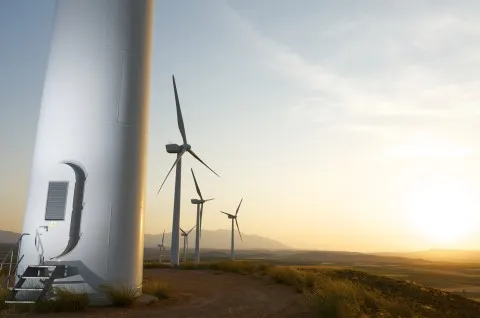
Will China’s wind power finally break free from curtailment?
Curtailment has averaged to a 4-year high at 15%.
China may have the highest wind power globally, accounting for a third of cumulative wind power capacity worldwide, but it’s still not enough. According to Evan Li, head of Utility & Alternative Energy Research, Asia Pacific, at HSBC, the wind curtailment rate in China has actually averaged 15%, the highest since 2012. “We believe a significant portion of the curtailment results from the local grid’s unwillingness to dispatch generation for renewable energy,” Li says.
Government reluctance
But why the reluctant reaction to wind power? Li explains that local governments are actually not incentivised to prioritise wind generation, as renewable energy projects are mandated by the central government to receive tax concessions. “The situation is exacerbated by an environment of weak power demand and the unpredictability of wind generation,” Li says.
However, the issue may be dire, but it is fixable, says Li. In fact, the NDRC and the NEA have announced a series of firm policies in March 2016 which would bring down the wind curtailment rate in the next few years. “The NDRC and the NEA will focus on ensuring power dispatch for renewables to tackle the problem of curtailment for wind and solar power,” says Nur Bekri, director of the National Energy Administration.
Is it fixable?
“We estimate wind and solar generation to grow at a CAGR of 20% between 2016 and 2020, implying wind and solar plant utilisation hours will grow at a 1.9% CAGR (or an aggregate 10%) over the same period, based on capacity targets laid out in the 13th Five Year Plan,” Li adds.
Meanwhile, Michael Davidson, a PhD candidate at the Massachusetts Institute of Technology, reduced capacity factors have been attributed to high amounts of forced curtailment, which reached as high as 50% in some regions last year. “The causes of curtailment are manifold: high penetrations of wind in provinces far from load centers, inflexibility of the coal-heavy generation mix, and institutional barriers owing to incomplete power deregulation,” Davidson says.
Supportive government policies
On the other hand, Aswani Srivatsava, GlobalData’s analyst covering power, says supportive government policies that include an attractive concessional program and the availability of low-cost financing from government banks are the main reasons for the success of the Chinese wind power market. “China’s quick adoption of wind power can be attributed to a wider global trend driven by depleting fossil fuel reserves, the declining cost of wind power generation and a growing sensitivity towards environmental issues,” Srivatsava says.













 Advertise
Advertise











